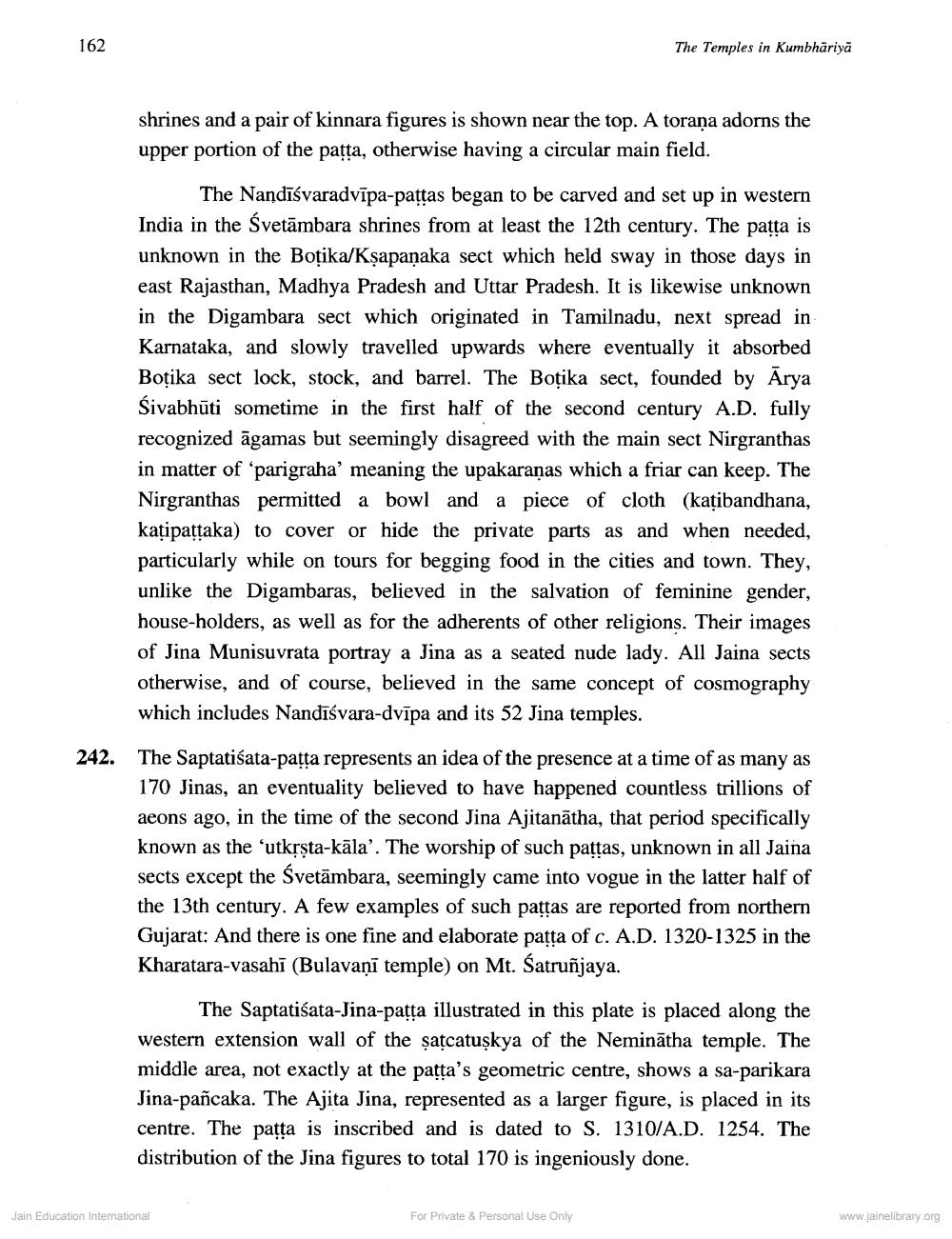________________
162
The Temples in Kumbhāriya
shrines and a pair of kinnara figures is shown near the top. A torana adorns the upper portion of the patta, otherwise having a circular main field.
The Nandīśvaradvīpa-pattas began to be carved and set up in western India in the Svetāmbara shrines from at least the 12th century. The patta is unknown in the Boţika/Kșapanaka sect which held sway in those days in east Rajasthan, Madhya Pradesh and Uttar Pradesh. It is likewise unknown in the Digambara sect which originated in Tamilnadu, next spread in Karnataka, and slowly travelled upwards where eventually it absorbed Botika sect lock, stock, and barrel. The Botika sect, founded by Arya Sivabhūti sometime in the first half of the second century A.D. fully recognized agamas but seemingly disagreed with the main sect Nirgranthas in matter of 'parigraha' meaning the upakaranas which a friar can keep. The Nirgranthas permitted a bowl and a piece of cloth (katibandhana, katipattaka) to cover or hide the private parts as and when needed, particularly while on tours for begging food in the cities and town. They, unlike the Digambaras, believed in the salvation of feminine gender, house-holders, as well as for the adherents of other religions. Their images of Jina Munisuvrata portray a Jina as a seated nude lady. All Jaina sects otherwise, and of course, believed in the same concept of cosmography which includes Nandīśvara-dvīpa and its 52 Jina temples.
242.
The Saptatiśata-pasta represents an idea of the presence at a time of as many as 170 Jinas, an eventuality believed to have happened countless trillions of aeons ago, in the time of the second Jina Ajitanātha, that period specifically known as the 'utkrsta-käla'. The worship of such pattas, unknown in all Jaina sects except the Svetāmbara, seemingly came into vogue in the latter half of the 13th century. A few examples of such pattas are reported from northern Gujarat: And there is one fine and elaborate patta of c. A.D. 1320-1325 in the Kharatara-vasahī (Bulavaņī temple) on Mt. Satruñjaya.
The Saptatiśata-Jina-patta illustrated in this plate is placed along the western extension wall of the satcatuskya of the Neminātha temple. The middle area, not exactly at the parta's geometric centre, shows a sa-parikara Jina-pañcaka. The Ajita Jina, represented as a larger figure, is placed in its centre. The patta is inscribed and is dated to S. 1310/A.D. 1254. The distribution of the Jina figures to total 170 is ingeniously done.
Jain Education International
For Private & Personal Use Only
www.jainelibrary.org




